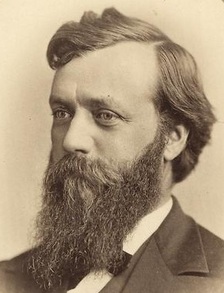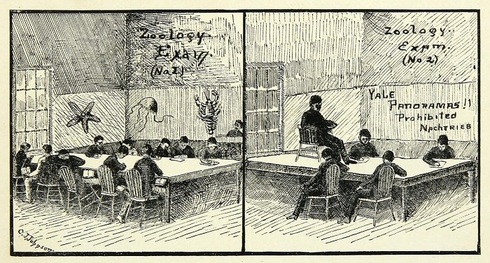 In addition to carrying out explorations and documenting the unique geologic formations of the state for the Minnesota Geologic and Natural History Survey, State Geologist Newton Horace Winchell (pictured at left) also assumed the responsibility of providing initial instruction in geology, botany, and zoology at the University of Minnesota.
In addition to carrying out explorations and documenting the unique geologic formations of the state for the Minnesota Geologic and Natural History Survey, State Geologist Newton Horace Winchell (pictured at left) also assumed the responsibility of providing initial instruction in geology, botany, and zoology at the University of Minnesota.
Instruction in the natural sciences began in earnest at the University in 1870 with a course in geography offered through the Preparatory Department. Following the passage of the act by the state legislature on March 1, 1872 that created the Minnesota Geological and Natural History Survey under the authority of the Board of Regents, course offerings in the natural sciences began to expand.
Winchell provided an overview of the initial courses he instructed in his official report to the President and Board of Regents in 1873. His description provides a snapshot of the content and curriculum of early instruction in the natural sciences. In the winter term of 1873, which began January 7, Winchell taught a junior level geology course of 4 students, and a physical geology course of 21 students. To aid in instruction, Winchell used James Dwight Dana’s Manual of Geology as the course text book. In the preface to the manual, Dana states,
“North America stands alone in the ocean, a simple isolated specimen of a continent… and the laws of progress have been undisturbed by the conflicting movements of other lands… It has been the author’s aim to present, for study, not a series of rock with their dead fossils, but the successive phases in the history of the earth, – its continents, seas, climates, life and the various operations in progress.”
During the spring term of 1873 Winchell oversaw instruction of 21 students in a course covering the field of botany. He reported, “When flowers appeared in the spring, [the students] were set to work on actual analysis of specimens, and each member of the class was required to work out independently, and properly classify, thirty or more species.” Students completed their classifications by utilizing Asa Gray’s Lessons in Botany and Vegetable Physiology. Intended as an introductory volume, the author conveyed in the preface that Lessons “comprises a pretty full account of the structure, organs, growth, and reproduction of plants, and of their important uses in the scheme of creation.”
The spring of 1873 was also the occasion of the first collegiate course to be offered in zoology. Winchell utilized Principles of Zoology: Touching the structure, development, distribution, and natural arrangement of the races of animals, living and extinct; with numerous illustrations by Louis Agassiz and Augustus A. Gould (originally published in 1848) as the course text. In the preface the authors stated, “Should our aim be attained, this work will produce more enlarged ideas of man’s relations to Nature, and more exalted conceptions of the plan of Creation and its Great Author.“
In 1874, the Department of Geology and Mineralogy was officially established as the fifth department under the College of Science, Literature and the Arts, and Winchell was instituted as department head. Winchell continued to teach up until 1878, when he was relieved of his instructor duties to focus all of his efforts towards survey work. Charles W. Hall was appointed Professor of Geology and Mineralogy and assumed responsibility for instruction in geology, botany, and zoology up until the mid-1880s when Conway MacMillan (botany) and Henry Nachtrieb (animal biology/zoology) were added to the faculty to expand instruction in these fields. By 1889, a formal Department of Botany and a Department of Animal Biology were established. An illustration from the University’s annual yearbook, The Gopher, Volume I (pg. 124) captured zoological instruction in 1888:
*The Department of Geology and Mineralogy was renamed the Department of Geology and Geophysics in 1962, and today is part of the Newton Horace Winchell School of Earth Sciences. The Department of Botany is now known as the Department of Plant Biology (renamed in 1988). The Department of Animal Biology, later Department of Zoology (1926), disbanded in 1976, and related curriculum was redistributed amongst the units of the College of Biological Sciences.
